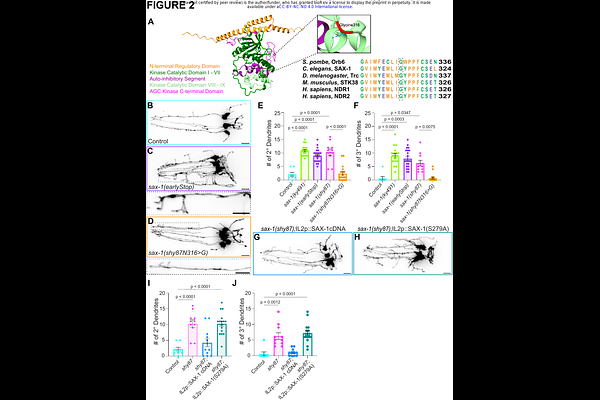NDR kinase SAX-1 controls dendrite branch-specific elimination during neuronal remodeling in C. elegans

NDR kinase SAX-1 controls dendrite branch-specific elimination during neuronal remodeling in C. elegans
Figueroa-Delgado, P. V.; Yogev, S.
AbstractNeuronal remodeling is crucial for proper nervous system development and function, and can be initiated by developmental programs, activity-dependent mechanisms, or stress. Despite significant advances, the underlying mechanisms that govern this process remain poorly understood. Here, we adapted C. elegans IL2 sensory dendrites as a model system to study developmental and stress-mediated dendrite pruning. Upon entering a stress-induced developmental diapause, IL2 dendrites grow a complex dendritic arbor, which is later pruned when reproductive development resumes. We identified unexpected specificity in the pruning process, with distinct genetic requirements to direct branch-specific elimination of secondary, tertiary, and quaternary branches. The serine/threonine kinase SAX-1/NDR promotes elimination of secondary and tertiary, but not quaternary, dendrites. SAX-1 functions with its conserved interactors SAX-2/Furry and MOB-2 in the removal of both dendritic branches. The guanine-nucleotide exchange factor RABI-1/Rabin8 and the small GTPase RAB-11.2 mediate the elimination of secondary branches with SAX-1, but their effect on tertiary branches is minimal. Consistent with the known roles of RABI-1 and RAB-11.2 in regulating membrane dynamics, we find that SAX-1 promotes endocytosis during remodeling. Together, our findings reveal distinct mechanisms for branch-specific elimination under stress-induced and developmentally regulated neuronal remodeling.